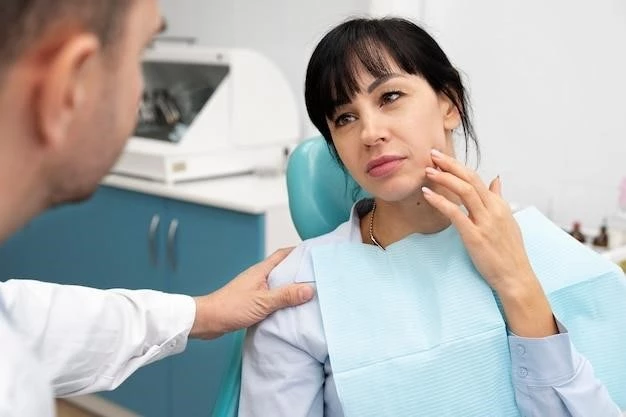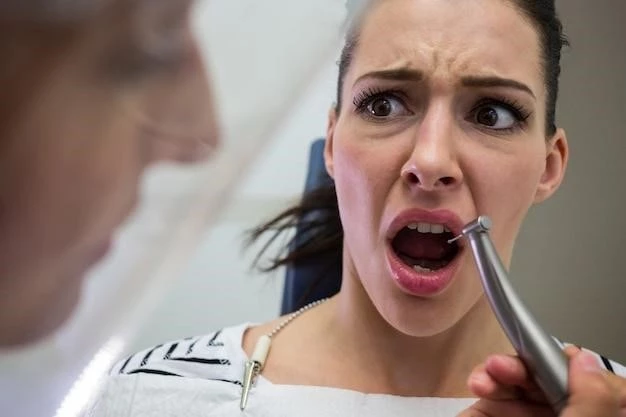Overview of Oral Facial Dyskinesia
Oral facial dyskinesia is a condition involving involuntary movements of the face and jaw, commonly seen in older patients undergoing long-term antipsychotic drug treatment․ It’s essential to understand the characteristics and impact of this disorder for proper management․
Definition and Characteristics
Oral facial dyskinesia encompasses a range of abnormal, involuntary movements involving the mouth and face, often linked to drug treatments or underlying health conditions․ Understanding the nature and characteristics of these movements is crucial for accurate diagnosis and tailored management strategies․ It is important for healthcare professionals to recognize the distinct features of oral facial dyskinesia to provide appropriate care and support to affected individuals․
Types of Dyskinesia
Explore different types of dyskinesia such as edentulous dyskinesia (ED), orofacial dyskinesias, and tardive dyskinesia․ Understanding these distinctions can aid in proper diagnosis and treatment approaches tailored to each specific subtype․
Edentulous Dyskinesia (ED)
Edentulous dyskinesia (ED) is a movement disorder characterized by repetitive abnormal movements of the mouth and jaw commonly seen in elderly edentulous individuals․ Understanding the distinguishing features of ED can aid in its accurate diagnosis and management․
Orofacial Dyskinesias
Orofacial dyskinesias present as involuntary repetitive movements of the mouth and face, primarily affecting older psychotic patients on long-term antipsychotic medication․ It is essential to recognize and differentiate these movements for appropriate management strategies tailored to each individual․
Causes and Risk Factors
Understand the underlying causes of oral facial dyskinesia, including medications and neurological conditions, to better identify risk factors and potential triggers for the development of these involuntary movements․ Awareness of these factors is key in managing and addressing the condition effectively․
Medications
Medications play a crucial role in the development of oral facial dyskinesia, with certain drugs, particularly antipsychotics, being linked to the onset of involuntary movements in the face and mouth․ Understanding the medication-related risk factors is essential for healthcare providers to make informed decisions regarding treatment strategies and potential medication adjustments․
Neurological Conditions
Neurological conditions are a significant factor in the development of oral facial dyskinesia․ Understanding the role of underlying neurological disorders in triggering these involuntary movements is crucial for accurate diagnosis and tailored treatment plans․ Healthcare professionals should consider the impact of neurological conditions when assessing patients with oral facial dyskinesia․
Symptoms and Clinical Presentation
Recognize symptoms of oral facial dyskinesia like involuntary movements of the mouth and face․ Understand the impact on daily life to facilitate early detection and appropriate management of this condition․
Involuntary Movements
Learn about the involuntary movements associated with oral facial dyskinesia, including spasms, protrusion of the tongue, drooling, and other repetitive motions of the mouth and face․ Recognizing these distinct movements is crucial for accurate diagnosis and effective management of this condition․
Impact on Daily Life
Understanding the impact of oral facial dyskinesia on daily life is essential, as these involuntary movements can affect speech, eating, and social interactions․ Recognizing how these symptoms disrupt daily activities helps in developing tailored strategies to improve quality of life for individuals with this condition․

Diagnosis and Differential Diagnosis
Identifying oral facial dyskinesia involves recognizing the distinctive involuntary movements of the mouth and face․ Differential diagnosis may include distinguishing from tardive dyskinesia and other related movement disorders․
Distinction from Tardive Dyskinesia
Understanding the differences between oral facial dyskinesia and tardive dyskinesia is crucial for accurate diagnosis and appropriate management․ Recognizing the unique characteristics and triggers of each condition aids in determining the most effective treatment strategies tailored to the individual’s needs․
Role of Dental Professionals
Dental professionals play a vital role in identifying oral facial dyskinesia, as they are well-placed to recognize early signs during routine oral examinations․ Their involvement in the monitoring and referral of individuals showing symptoms of oral facial dyskinesia can contribute significantly to the prompt diagnosis and coordinated care of affected patients․
Treatment Approaches
Explore treatment options for oral facial dyskinesia, encompassing medication management and behavioral therapies․ Understanding these approaches can help in effectively managing and improving the quality of life for individuals affected by this condition․
Medication Management
Medication management is a crucial aspect of treating oral facial dyskinesia, particularly focusing on adjusting antipsychotic medications associated with the onset of involuntary movements․ Collaborating with healthcare providers to appropriately manage medication regimes can significantly improve the symptoms and quality of life for individuals affected by this condition․
Behavioral Therapies
Behavioral therapies play a significant role in managing oral facial dyskinesia․ Techniques like biofeedback, relaxation strategies, and cognitive-behavioral therapy can help individuals better control involuntary movements and improve overall quality of life․ Collaborating with healthcare providers to integrate behavioral approaches into the treatment plan is essential for comprehensive care․
Prognosis and Complications
Understanding the long-term outlook for oral facial dyskinesia and potential complications is crucial for individuals affected by this condition․ Recognizing the prognosis and being aware of possible complications can aid in developing effective management strategies and interventions to improve overall quality of life․
Long-Term Outlook
Considering the long-term outlook for patients with oral facial dyskinesia is essential for healthcare providers to develop appropriate management plans․ Recognizing the potential complications and progression of the condition over time can help in providing comprehensive care and support to individuals affected by oral facial dyskinesia․
Potential Complications
Recognizing potential complications associated with oral facial dyskinesia is crucial in providing comprehensive care․ Complications can include difficulties in speech, eating, social interactions, and overall quality of life․ Understanding these potential challenges can guide healthcare providers in implementing appropriate strategies to address and manage these complications effectively․

Research and Developments
Stay informed about the latest studies and findings related to oral facial dyskinesia․ Ongoing research aims to enhance diagnosis, treatment, and management of this condition through innovative approaches and discoveries․ Keeping up-to-date with current developments is essential for healthcare professionals and individuals affected by oral facial dyskinesia․
Current Studies and Findings
Novel research studies explore the underlying mechanisms and potential treatment options for oral facial dyskinesia․ Recent findings focus on the impact of various medications on dyskinetic movements and aim to enhance diagnostic methods to improve the management of individuals affected by this condition․ Staying informed about these current studies is crucial for healthcare professionals to offer the best care possible․
Support and Resources
Access patient support groups and educational materials to enhance your understanding of oral facial dyskinesia․ Joining support groups can provide valuable insights and emotional support, while educational materials offer information on the condition, treatment options, and coping strategies․ Utilizing these resources can empower individuals affected by oral facial dyskinesia to navigate their journey with greater knowledge and resilience․
Patient Support Groups
Engage with patient support groups dedicated to oral facial dyskinesia to connect with individuals sharing similar experiences․ These groups offer a platform for emotional support, valuable insights, and sharing coping strategies․ Joining these support networks can provide a sense of community and empowerment throughout the journey of managing oral facial dyskinesia․
Educational Materials
Utilize educational materials on oral facial dyskinesia to gain insights into the condition, treatment options, and coping mechanisms․ These resources offer valuable information on managing oral facial dyskinesia, enhancing understanding, and empowering individuals affected by this disorder to navigate their healthcare journey with knowledge and confidence․
